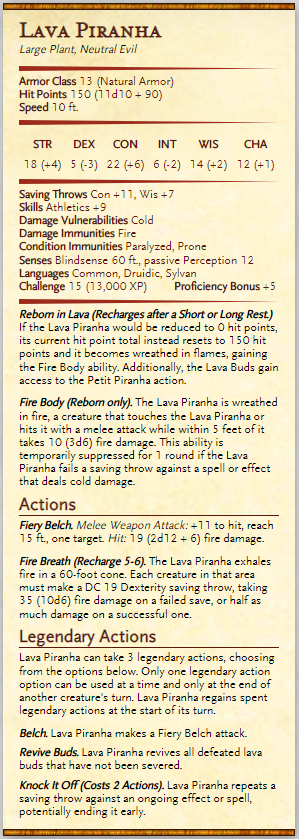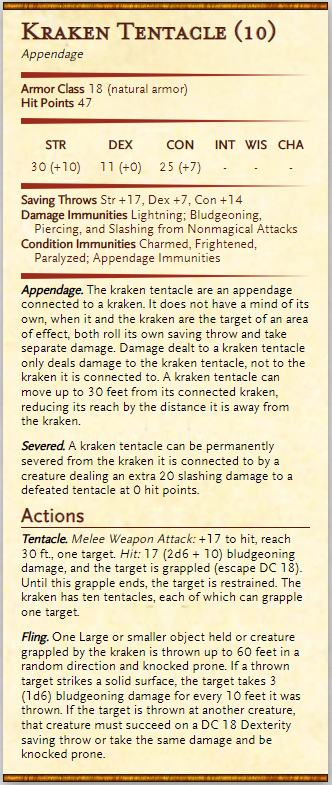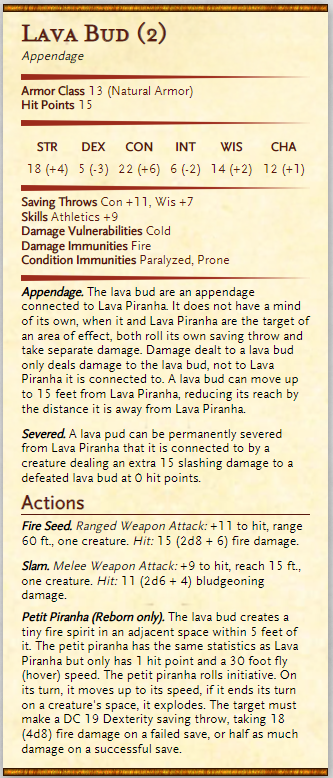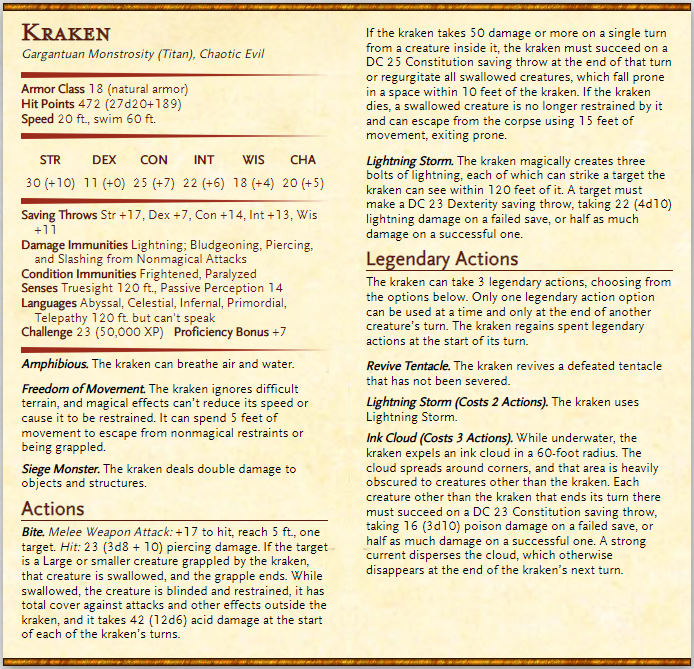Multi-Appendage Boss Fight - Homebrew
Header Art: Paper Mario (2000) by Nintendo
One of my favorite video games came out in 2000 for the Nintendo 64 - Paper Mario (2000), followed by its (arguably better) sequal Paper Mario: The Thousand-Year Door (2004) for the Nintendo Gamecube. Both have adventure, exploration, fun side characters, a cliche (but still great fun) story, fun mechanics, and more. When I think of my childhood and Nintendo, I first think of Paper Mario… followed by the obsessive need to catch a Pikachu and defeat the Elite Four.
Paper Mario Boss Fights
One of my favorite things in Paper Mario are the boss fights. These are always interesting affairs where the boss is rarely by themselves, often relying on other creatures on the field for you to target with your attacks. This creates interesting game choices where you could keep pounding the boss to the ground and hope you can reduce them to 0 hit points first, but then you are ignoring other creatures on the battle stage who will be doubling or tripling the amount of damage you will be taking in the fight.
In one such boss fight, Mario and pal are having to defeat a piranha plant that can grow in lava. When fighting this creature, you have the main head of the plant, called Lava Piranha, and then two smaller plant heads, known as Lava Buds, that also appear alongside Lava Piranha. In this fight, you have to defeat Lava Piranha who has 40 hit points and an attack power of 5, all the while it’s two Lava Buds are also bugging you, each with 8 hit points and an attack power of 4.
So these two Lava Buds aren’t that difficult, you can probably take them out with a single attack if you spend some flower points (the stamina points of Paper Mario that fuel powerful martial attacks) - which stops them from hurting you for a couple of rounds until the Lava Piranha activates them. Lava Piranha, on the other hand, has a lot of hit points and deals quite a bit of damage. If you focused only on Lava Piranha, you’d have to spend at least 4 rounds, if not more 5 or 6 rounds or more, to defeat the main head… all the while you are taking damage from the main head and extra damage from the smaller heads.
So it makes sense to defeat the smaller Lava Buds first, and then focus your attacks on Lava Piranha - but not exactly. Once the Lava Buds have been defeated, they remain defeated only for a turn or two before they are back in the fight and continue being distractions for Mario to deal with. That isn’t even getting into the second phase of the boss fight when the Lava Buds begin shooting out Petit Piranhas, tiny flame spirits with 1 hit point and 6 attack power, that make it so you either need a really good area of effect ability, or once again find your attention diverted to these measly minions who are easy to defeat, but pack a wallop when they hit.
All of this and it’s just now that I tell you that if you do knock a Lava Bud out, Lava Piranha can simply revive them and they are back in the fight, still dealing damage and causing all sorts of problems for your plans. Defeating Lava Piranha isn’t as simple as just knocking out the weaker enemies and then dealing with the big bad, or dealing with the big bad and then wiping out the minor enemies. You have to be constantly on your guard, thinking through strategies, and deciding how you are going to deal with the entire encounter instead of an individual monster.
Multi-Appendage Boss Fights
So what does a Paper Mario boss fight have to do with a game like Dungeons & Dragons? Well, I am a firm believer of stealing every mechanic and idea that you can, throwing them in a blender, and gulping down whatever concoction you create. There are a ton of great ideas in role-playing games, puzzle games, action-adventure games, horror games, and more. By looking at whatever games do, and do right, you can take those pieces and add them to your game.
This brings us to the Multi-Appendage Boss Fights - a style of fighting a boss that is more than just about killing the boss and its minions. Instead, this boss has tendrils, tentacles, off-shoots, duplicates, and more that it can create to help protect itself from a group of adventurers whose combat style is “fireball and forget it”.
For two examples, that of a Kraken and Lava Piranha, you can check out the links below.
The Rules
When creating a multi-appendage boss fight, there are a few things to keep in mind that should help keep you on track.
Appendages. An appendage is an extension of the boss, a boss could have only a single appendage, or multiple, like a kraken has multiple tentacles. It is both, a separate creature and a part of the boss. It can be targeted and defeated by itself.
Boss. This is the main opponent in an encounter and controls the appendages, typically a living creature but could be a large device or some other large entity.
Hit Points. An appendage has its own set of hit points, typically 10% of the boss's health. Any damage an appendage takes is only dealt to the appendage and does not carry over to the boss.
Statistics. An appendage uses all the same statistics of the boss, but does not have any mental ability and can not think for itself. However, if the boss is incapacitated, like if it is paralyzed or stunned, the appendage can still take its turn in the initiative. Only very rarely, like the if the boss is petrified or similar circumstances, is the appendage also defeated.
Immunities. An appendage is immune to all mental effects, including the Charmed condition, psychic damage, or being frightened. It can still be stunned, incapacitated, or take damage, but only it is affected, not the boss it is connected to. An appendage's immunities are up to the Game Master's discretion based on how spells and effects may effect the appendage and its boss.
Space. An appendage occupies its own space in the battlefield, though typically it can also occupy the space of the boss that controls it.
Permanently Severed. An appendage may be permanently severed from the boss. If it is possible, it will be explained in its stat block.
Attack & Damage. An appendage has the same attack bonus as the boss. The damage it deals is counted against the boss's damage for a fight.
Challenge Rating. A boss's challenge rating, if adapting a creature, like a kraken, should be increased by one. This includes the challenge of fighting the boss and the appendages it controls.
Boss's Multiattack. If you are using an already created stat block and the boss has a multiattack that would use the appendage, remove the appendage attacks from the boss's multiattack.
Speed. An appendage doesn't have a speed, but is rather attached to the boss unless under special circumstances. When the boss moves, the appendages move along with it, remaining in their position relative to the boss. If this would put them in an occupied space, the appendage immediately moves to the closest empty space.
Senses. Appendages do not have any senses, instead relying on the boss's senses. If the boss is blinded or unable to see creatures, it would affect the appendages as well.
Languages. Appendages do not talk except in rare circumstances.
Example
With those rules in mind, I’ve gone ahead and remade the kraken as a multi-appendage monster and Lava Piranha from Paper Mario since it was the reason for even creating this homebrew. I hope these mechanics help create even more exciting boss fights and final encounters for your games!
Lava Piranha has two lava buds attached to it, as well as having an ability that allows it to be reborn in lava, letting it burn brightly and be even more dangerous than the party might first guess if they stumble across this plant in a volcano.
Like what we are doing here?
Support us on Patreon!
You’ll get early access to deep dives, the Homebrew Hoard featuring 500+ monsters, Monster Thursdays, ad-free articles, and more!
Follow us on Twitter to keep up to date on everything we talk about!







